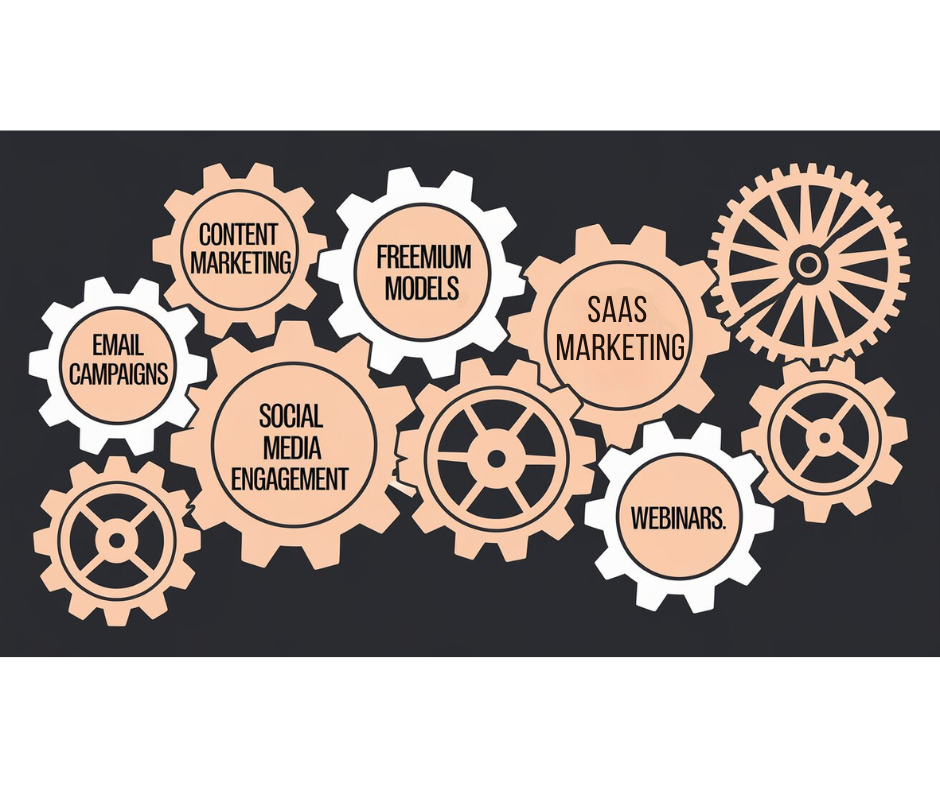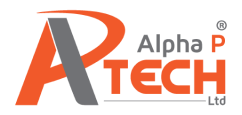Introduction
In the competitive world of SaaS marketing, effective lead-generation strategies are the cornerstone of sustainable growth. Due to the rise in the number of SaaS start-ups in recent years, it’s becoming increasingly important to foster meaningful connections that result in long-term customer relationships, not just attracting and converting high-quality leads to drive numbers. In this article, we delve into the proven B2B lead generation tactics that have enabled SaaS businesses to scale their operations, expand their customer base, and achieve remarkable success. By exploring these strategies, you’ll uncover actionable insights that can help your business thrive in an ever-evolving marketplace.
What is SaaS Lead Generation?
Lead generation for SaaS businesses is attracting and engaging potential customers who are most likely to benefit from a software solution. What sets SaaS marketing apart is the unique dynamic where the customers who pay for the product (usually business owners or directors) are not always the end users of the software (usually employees or members of staff). This distinction creates both opportunities and challenges, as businesses must craft messaging that resonates with decision-makers while ensuring the product meets the needs of its users. The subscription-based nature of SaaS also necessitates a focus on long-term engagement, requiring lead-generation strategies that prioritise retention alongside acquisition. By leveraging data-driven tactics and personalisation, SaaS companies can bridge the gap between users and buyers, establishing themselves as leaders in B2B lead generation.
Proven Lead Generation Strategies for SaaS Companies
B2B buyers spend 27% of their buying journey conducting independent research online
Strategy 1: Content Marketing and SEO
Content marketing and SEO are cornerstone strategies for SaaS marketing, enabling businesses to attract and nurture potential leads effectively. High-quality website content, in particular, plays a crucial role in B2B lead generation, as it often serves as the first touchpoint for prospective buyers. According to Gartner, B2B buyers spend 27% of their buying journey conducting independent research online, making it essential for SaaS companies to provide clear, informative, and engaging content on their websites. Product pages, FAQs, and comparison guides are especially valuable in helping decision-makers evaluate solutions and gain confidence in their purchase.
Blogs, whitepapers, webinars, and case studies further strengthen a company’s credibility by addressing specific pain points and offering actionable insights. SEO amplifies the impact of this content by increasing its visibility to potential customers. By targeting high-intent keywords, such as “top SaaS marketing tools” or “best lead generation strategies for B2B,” SaaS businesses can attract organic traffic from buyers actively seeking solutions. Optimising website performance—through fast load times, mobile-friendly designs, and intuitive navigation—further enhances the user experience, encouraging visitors to explore deeper into the sales funnel. Together, content marketing and SEO provide SaaS companies with a powerful framework for scalable and effective lead generation.
Strategy 2: Free Trials and Freemium Models
Free trials and freemium models have become essential lead-generation strategies in SaaS marketing, offering potential customers a risk-free way to experience the product’s value. By allowing users to explore key features without an upfront commitment, these approaches effectively lower the barrier to entry and encourage engagement. Free trials, typically lasting 7 to 30 days, give prospects a taste of the software’s functionality, increasing the likelihood of conversion as they see its benefits firsthand. For instance, project management tools like Asana offer a 30-day trial of their premium plan, enabling teams to test advanced features before making a purchase.
Freemium models take this a step further, providing ongoing access to a basic version of the product. Companies like Slack and Zoom have successfully implemented this strategy, which allows them to upsell premium features to users who have already become reliant on the tool. Both approaches attract a larger audience and build trust, making them highly effective for B2B lead generation in the competitive SaaS market.
Strategy 3: Email Marketing Campaigns
Email marketing campaigns remain one of the most effective lead-generation strategies in SaaS marketing, particularly for nurturing prospects through the sales funnel. Targeted email campaigns allow SaaS businesses to connect with potential customers in a direct, personalised way, providing valuable information that aligns with their specific needs and pain points. Whether it’s a welcome series for trial users or a drip campaign offering educational resources, these emails can build trust and move leads closer to conversion.
Personalisation and automation are key to maximising the impact of email campaigns. By segmenting audiences based on behaviour, industry, or buying stage, SaaS companies can craft tailored messages that resonate more deeply with recipients. Tools like HubSpot and ActiveCampaign enable automation, ensuring timely delivery of emails triggered by user actions, such as signing up for a free trial or downloading a whitepaper. This combination of personalisation and efficiency makes email campaigns a cornerstone of effective B2B lead generation. For more information on mastering personalisation, check out our detailed guide here.
85% of CEOs and vice presidents use social media to help guide their buying choices – Forbes
Strategy 4: Social Media Engagement
Social media engagement has become a critical component of effective lead-generation strategies in SaaS marketing. Platforms like LinkedIn, Twitter, and Facebook allow SaaS companies to connect directly with potential customers, building relationships and showcasing their expertise. For B2B lead generation, social media provides a unique opportunity to engage decision-makers, many of whom rely on these platforms to inform their purchasing decisions. In fact, nearly 85% of CEOs and vice presidents say they use social media to help guide their buying choices, according to Forbes.
To leverage social media effectively, SaaS companies should focus on creating value-driven content that resonates with their target audience. This includes sharing industry insights, customer success stories, and thought leadership pieces. Additionally, using targeted ads and participating in relevant conversations or groups can enhance visibility and engagement. By adopting a strategic approach, SaaS businesses can turn social media into a powerful channel for generating and nurturing leads.
Strategy 5: Webinars and Live Demos
Webinars and live demos are highly effective lead-generation strategies in SaaS marketing, offering an interactive way to showcase the value of your product. These events allow potential customers to see the software in action, ask questions in real time, and gain a deeper understanding of how it addresses their unique challenges. For B2B lead generation, this personal engagement can be instrumental in building trust and moving prospects closer to a purchasing decision.
To maximise the impact of webinars and live demos, careful planning and promotion are key. Start by identifying a relevant topic that aligns with the pain points of your target audience, and use email campaigns, social media posts, and paid ads to generate interest. During the event, ensure the content is concise, informative, and tailored to your audience’s needs, with a clear call to action at the end. Recording and repurposing the session for on-demand access can further extend its reach, driving sustained engagement and lead generation.
Strategy 6: Popups and Chatbots
Popups and chatbots are increasingly popular lead-generation strategies in SaaS marketing, offering practical tools for converting website visitors into qualified leads. Well-designed and strategically timed popups can be highly effective in capturing email addresses or prompting immediate actions, such as signing up for a free trial or downloading a resource. By using dynamic triggers, like time spent on a page or exit intent, SaaS businesses can ensure popups appear at the right moment without disrupting the user experience.
Similarly, AI-driven chatbots provide a seamless way to engage visitors in real time, answering questions and guiding them through the sales funnel. Chatbots can personalise interactions by using data about the visitor’s behaviour or profile, helping to qualify leads efficiently. For example, a chatbot on a pricing page can offer tailored recommendations or schedule a demo with the sales team. Together, popups and chatbots enhance engagement and streamline B2B lead generation, driving meaningful interactions that lead to conversions.
Case Studies: SaaS Companies That Scaled Through Effective Lead Generation
Successful SaaS companies have demonstrated how tailored lead-generation strategies can drive significant growth. Canva, for instance, is a prime example of a freemium business model done right. By offering a free version of their graphic design tool, Canva attracted millions of users who later upgraded to paid plans to access premium features. This approach not only widened their user base but also fostered a loyal community of customers, showcasing the power of freemium models in SaaS marketing.
HubSpot, a leading CRM platform, leveraged inbound marketing to establish itself as a market leader. Their strategy included creating diverse content formats, such as blogs, eBooks, and webinars, supported by a user-friendly and SEO-optimised website. This combination of educational content and smart website design helped HubSpot attract and convert high-quality leads, proving the effectiveness of content marketing and lead nurturing in B2B lead generation.
Outreach.io achieved remarkable growth through a data-driven approach to lead generation. By analysing customer pain points and focusing on hyper-personalised outreach, they successfully engaged high-value prospects and scaled their user base. These case studies highlight a crucial takeaway: aligning lead generation strategies with customer needs and leveraging innovative approaches can propel SaaS companies toward sustainable success.
Measuring and Optimizing Lead Generation Efforts
Tip 1: Know Your Audience
Measuring and optimising lead generation strategies begins with understanding your audience. Creating detailed buyer personas allows SaaS marketing teams to identify key customer traits, preferences, and challenges. By qualifying leads and using audience segmentation, businesses can tailor their messaging and outreach to resonate with specific groups. This targeted approach ensures B2B lead generation efforts are more focused, efficient, and successful.
Tip 2: Test and Optimise
To maximise the effectiveness of lead generation strategies, continual testing and optimisation are essential. A/B testing different versions of copy, landing pages, and campaigns can help identify what resonates best with your audience. By refining these elements based on performance data, SaaS marketing efforts can achieve higher conversion rates. For more insights, read our article Maximise Conversions: Your Guide to B2B Sales Funnel Optimisation.
Tip 3: Leverage Analytics and MarTech
Leveraging analytics and MarTech tools is crucial for refining lead-generation strategies in SaaS marketing. These technologies provide valuable insights into customer behaviours and campaign performance, enabling businesses to optimise their efforts. From tracking conversion rates to identifying high-performing channels, MarTech empowers data-driven decisions. Explore more in our article Top 7 MarTech Trends Shaping the Future of B2B Marketing in 2024.
Tip 4: Focus on Quality Over Quantity
Focusing on quality over quantity is a cornerstone of effective lead-generation strategies in SaaS marketing. Personalisation enables businesses to engage prospects with tailored messaging that addresses their specific needs, resulting in higher conversion rates compared to targeting large volumes of unqualified leads. Learn more about the power of personalisation in our article The Power of Personalisation: Redefining B2B Marketing for Lasting Success.
Conclusion
Effective lead-generation strategies are essential for SaaS marketing success, helping businesses attract, engage, and convert high-quality leads. From leveraging content marketing and SEO to offering free trials, embracing social media engagement, and utilising tools like chatbots and MarTech, the tactics discussed in this article showcase a range of proven approaches for driving growth. Case studies from industry leaders like Canva, HubSpot, and Outreach.io further highlight the transformative impact of well-executed B2B lead generation strategies.
In the SaaS industry, where customer needs and decision-making processes are complex, adopting a tailored, data-driven approach is crucial. By understanding your audience, testing and optimising campaigns, and focusing on personalisation, you can build a sustainable lead generation framework that drives both immediate results and long-term success.
At Alpha P Tech, we specialise in helping SaaS companies scale their businesses by helping you craft authentic messages and brand voices with bespoke marketing and lead generation solutions. If you’re ready to implement the strategies shared in this article or need expert guidance in tailoring them to your unique goals, we’re here to help. Contact us today to explore how we can support your growth journey, and feel free to share your experiences in implementing these techniques—we’d love to hear from you!



